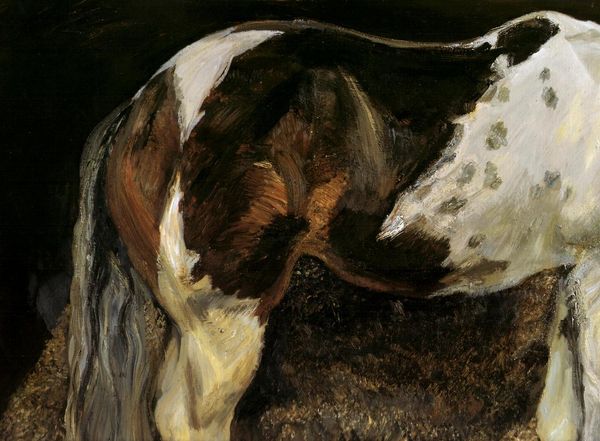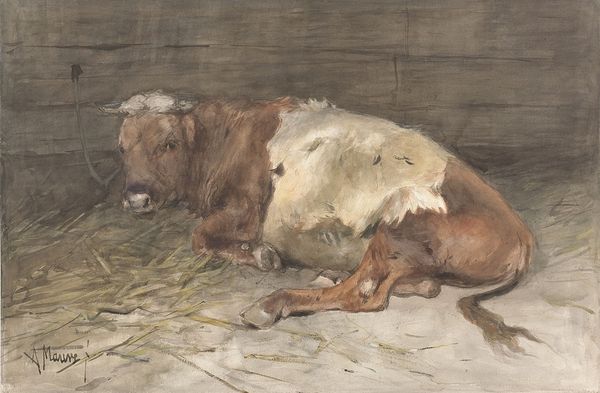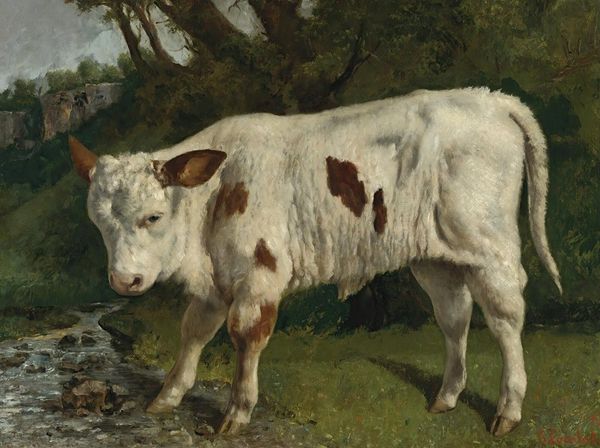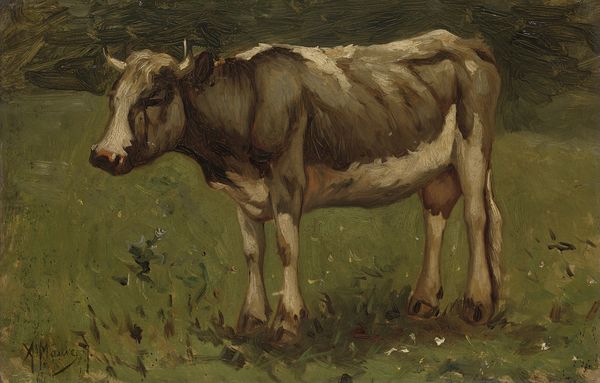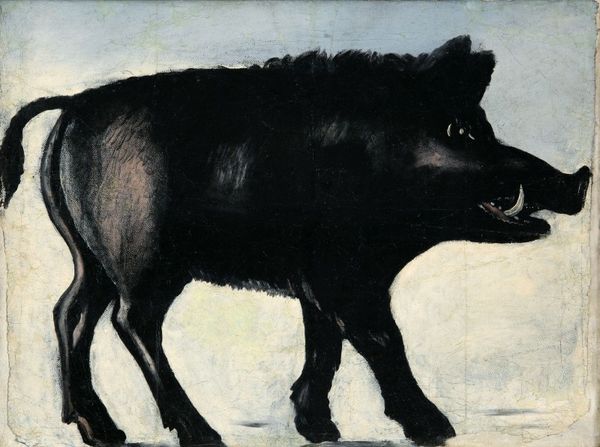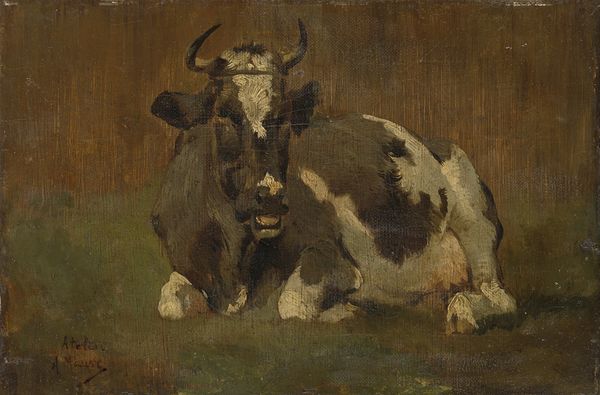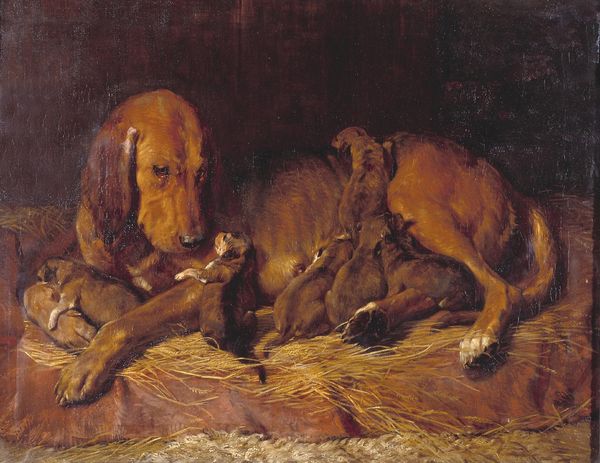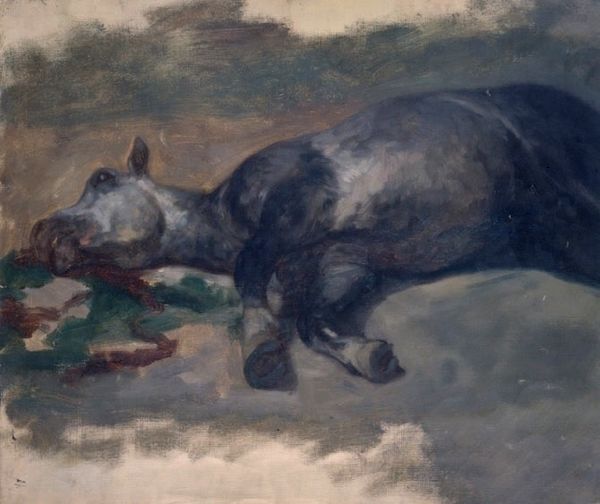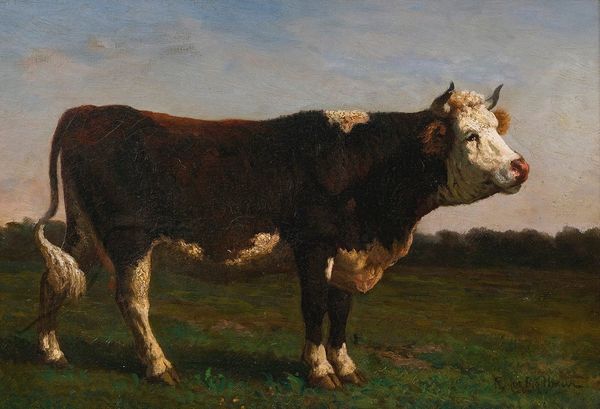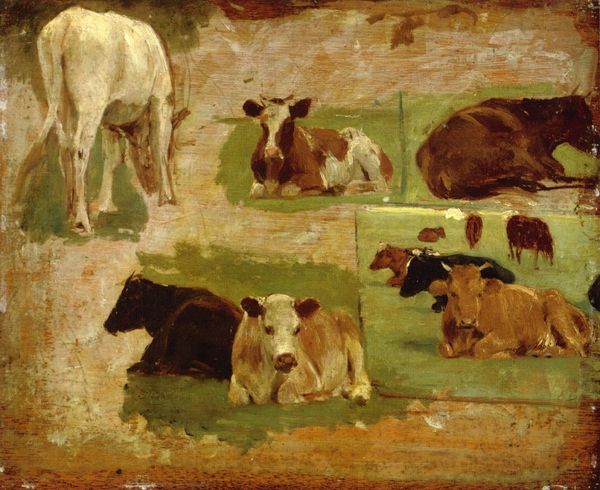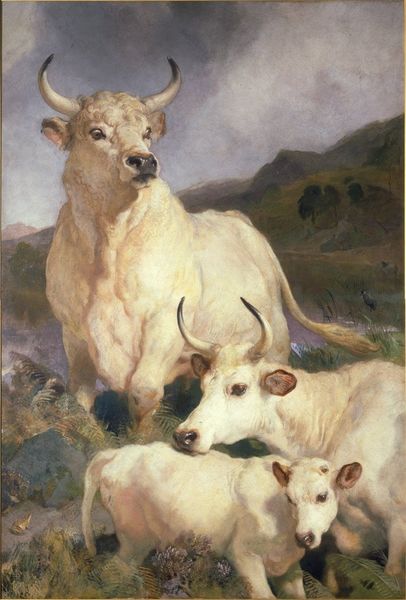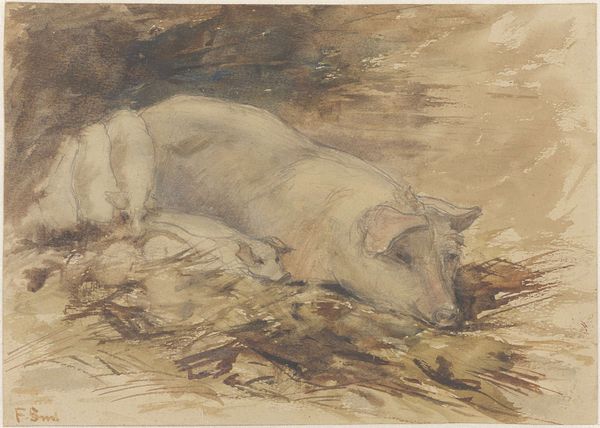
Copyright: Public domain
Editor: So here we have Van Gogh's "Lying Cow," from 1883, rendered in oil. It’s deceptively simple. The texture is quite striking and immediate, really emphasizing the physicality of the paint itself. How would you approach understanding a piece like this? Curator: As a materialist, I immediately gravitate to the 'how' of its making. Van Gogh's brushstrokes here aren't just descriptive; they're active. Consider the conditions of artistic production. He wasn’t just depicting rural life; he was engaging with the very materials available to him – cheap oil paints, coarse canvas perhaps – to depict a common subject. Editor: Interesting. So, it's less about the cow itself, and more about the act of painting it with these available means? Curator: Precisely. Look at the impasto, the thick application of paint. What does that materiality suggest? It moves beyond simple representation, highlighting the labor and the artist’s immediate, almost urgent interaction with the medium. One might argue he wasn’t painting a cow, but his experience of labor through this act of painting, reflecting broader agricultural labor and the socio-economic reality of the era. Editor: I see that, yes. The earthiness of the colors supports that reading, too. What's implied with using painting on canvas, instead of another, less costly support? Curator: The choice of canvas places it, problematically, into the realm of “high art” and elevates it to the standards of bourgeoise collecting culture of the time. We can ask then, how does an image of labor performed become a collectible? Who is the intended audience? What value does it have beyond being a rendering of bovine presence? Editor: This has totally changed my perspective. I thought it was a simple landscape. Curator: Exactly! By focusing on materials and processes, we unlock deeper layers of meaning. Editor: I learned to look for the implications behind the artistic process, the artistic intention, the value placed in what would seem to be a rudimentary image. Curator: And how artistic representation intersects with labor. An important relationship, for sure.
Comments
No comments
Be the first to comment and join the conversation on the ultimate creative platform.
